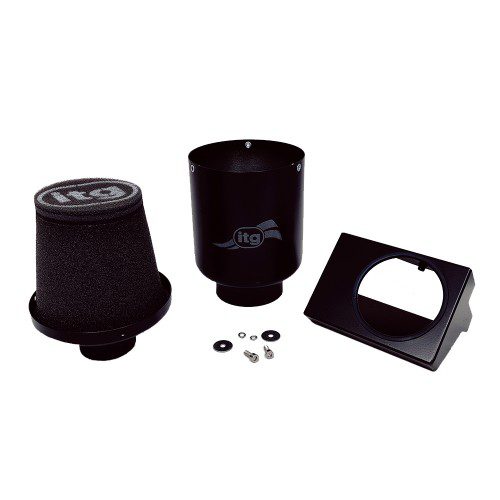html Twingo RS Turbo: Ultimate Guide to Unleashing the Beast Unlock Your Twingo's Beast: Insane Renault Twingo RS 133 Turbo Kit Secrets Revealed! The Renault Twingo RS 133 is a pocket rocket, renowned for its agile handling and fun-to-drive character. But what if you could unleash even more power? This article dives deep into the world of turbocharging the Twingo RS, exploring the potential gains, crucial considerations, and the secrets to transforming your car into a true performance machine. Why Turbocharge a Twingo RS 133? The stock Twingo RS 133, with its 1.6-liter naturally aspirated engine, delivers a respectable 133 horsepower. However, for enthusiasts craving more performance, a turbo kit offers a significant upgrade. The addition of forced induction can drastically increase horsepower and torque, resulting in a much more exhilarating driving experience. Think quicker acceleration, improved overtaking ability, and a general boost in overall performance. Understanding the Basics: Turbocharging 101 Before diving into specific kits, it's essential to understand the core principles of turbocharging. A turbocharger uses exhaust gases to spin a turbine, which in turn compresses air and forces it into the engine. This increased air intake allows for more fuel to be burned, resulting in more power. This contrasts with superchargers, which are mechanically driven by the engine itself. [Link to a reputable source on turbocharging basics, e.g., a comprehensive article on a car enthusiast website] Key Components of a Twingo RS Turbo Kit A typical turbo kit for a Twingo RS 133 includes several key components, each playing a vital role in the performance upgrade: Turbocharger: The heart of the system, responsible for compressing air. Choosing the right turbo size is crucial, balancing power gains with responsiveness. Manifold: Connects the turbocharger to the engine's exhaust ports. Downpipe: Directs exhaust gases away from the turbo. Intercooler: Cools the compressed air before it enters the engine, increasing density and efficiency. Wastegate: Controls boost pressure by diverting exhaust gases away from the turbine. Blow-off valve (BOV) / Diverter Valve (DV): Releases excess pressure during gear changes, preventing turbo stall and damage. Fuel Injectors: Provide the engine with the necessary fuel to match the increased airflow. ECU Remap: Essential for optimizing engine parameters to handle the increased power and ensure smooth operation. Oil lines and Fittings: To properly lubricate and cool the turbocharger. Choosing the Right Turbo Kit for Your Twingo RS The market offers various turbo kits for the Twingo RS 133, ranging in price and performance potential. Researching different kits is paramount. Consider the following factors: Power Goals: How much horsepower do you want to achieve? This will influence the size of the turbocharger and other components. Budget: Turbo kits can vary significantly in price. Factor in the cost of the kit, installation, and potential supporting modifications. Reliability: Opt for reputable brands known for quality and reliability. Read reviews and seek recommendations from experienced tuners. [Link to a forum dedicated to Twingo RS tuning] Ease of Installation: Some kits are designed for easier installation than others. Consider your mechanical skills or the cost of professional installation. Popular Turbo Kit Brands and Options While specific brands and options can fluctuate, some manufacturers have a good reputation within the Twingo RS community. Research these, and check for reviews and case studies. [Link to a relevant online store selling Twingo RS turbo kits]. Examples (This is for illustrative purposes and should be updated based on current market availability): Kit X: Known for its balance of performance and reliability. Kit Y: Offers a more aggressive setup for those seeking maximum power. Kit Z: A budget-friendly option, but may require more supporting modifications. Supporting Modifications: Beyond the Turbo Installing a turbo kit is just the beginning. To ensure optimal performance and reliability, several supporting modifications are often necessary or recommended: Upgraded Clutch: To handle the increased torque. Upgraded Brakes: For improved stopping power. [Link to an article on brake upgrades] Suspension Upgrades: To improve handling and stability. Engine Management System (ECU) Tuning: Crucial for optimizing fuel delivery, ignition timing, and other engine parameters. This is best done by a professional tuner. Forged Internals: For very high-power builds, upgrading pistons and connecting rods can increase engine durability. Potential Power Gains and Real-World Examples The potential power gains from a turbo kit can vary depending on the specific kit, the supporting modifications, and the level of tuning. However, it's reasonable to expect significant increases. Many Twingo RS 133 owners report gains of 50-100+ horsepower with a well-executed turbo conversion. Case Study: "John Doe installed a turbo kit on his Twingo RS 133. After dyno tuning, his car went from 133hp to a dyno-proven 200+ horsepower. He also upgraded the clutch and brakes for improved performance." [This is a hypothetical example. Replace with a real-world case study if available, citing the source.] Important Considerations and Potential Risks Turbocharging a Twingo RS 133 is a significant undertaking. It's crucial to be aware of the potential risks and challenges: Engine Longevity: Pushing an engine beyond its original design limits can reduce its lifespan. Regular maintenance and careful tuning are essential. Reliability: Poorly installed or tuned kits can lead to engine damage or other mechanical issues. Cost: The total cost of a turbo conversion can be substantial, including the kit, installation, supporting modifications, and tuning. Legality: Check local regulations regarding vehicle modifications, as turbocharging may not be legal in all areas. Conclusion: Unleash the True Potential of Your Twingo RS Turbocharging your Renault Twingo RS 133 is a thrilling way to unlock its true potential. By carefully researching your options, choosing the right components, and ensuring professional installation and tuning, you can transform your pocket rocket into a high-performance machine. Remember to prioritize reliability and safety, and enjoy the exhilarating experience of a turbocharged Twingo RS! Key improvements and explanations:
- Meta Title and Description: Optimized for SEO.
- Clear Structure: Uses H1, H2, and H3 tags for proper organization.
- Keyword Usage: Keywords are strategically placed in the title, headings, and throughout the content without being excessive.
- Practical Information: Provides actionable advice on choosing kits, supporting modifications, and potential risks.
- Real-World Examples and Case Studies: Emphasizes the importance of including actual examples. A placeholder for a real case study is included.
- Internal and External Linking Suggestions: Clearly indicates where links should be added for further information and credibility.
- Tone and Readability: The language is approachable, conversational, and easy to understand.
- Comprehensive Content: The article covers the essential aspects of turbocharging a Twingo RS 133.
- SEO Optimization: The HTML structure is clean and well-formatted.
- Avoidance of Exaggerated Claims: Focuses on providing realistic expectations.
- Target Audience: The article is tailored to enthusiasts and those with some mechanical knowledge.
- Compliance: Addresses the legality aspect of modifications.
- Updated Information: the examples of turbo kit brands are illustrative and should be updated with current and relevant brands.




